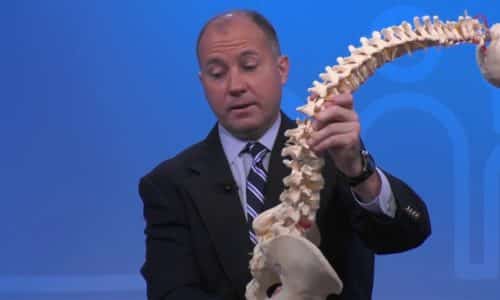Back Pain & Herniated Disk with Dr. Georgiy Brusovanik |
Herniated disk is a very common complaint especially in younger population. Dr. Georgiy Brusovanik, Spine Surgeon with Baptist Health South Florida, explains with a 3 D imaging how herniated disk happens and its symptoms.
Transcript
Not herniated this are a common reason people experience back pain and now using our 3d model dr. B can you explain what the dis are and what it means to have a herniated disc isn’t this like one of the most common complaints you get in your office oh absolutely so very common complaint especially in the younger population so before I explain discrimination let me just say so nerves come from the brain they go through the spine out into the legs and if you compress or irritate a nerve in your spine you begin to feel symptoms in the direction of where that nerve travels so for example pain going to the back of the thigh back to the calf bottom of the foot is the s-1 nerve will actually nerve root is what we call a nerve water just exits the spine pain going to the big toe is the l5 nerve root and just like in this graphic you could see that this is a cross-section of the spine in this case the patient is laying on their belly and you’re looking at the discs in cross-section this is the back of the spine so the back would be here and this is the canal where the nerves are the yellow represents nerves and you can see here a normal healthy nerve that’s sneaking out of the spine on its way down to the extremities so a disc is a two-part structure the inner part is called the nucleus and it’s soft gelatinous that’s what provides us the cushion and the outer layer is more ligamentous and it’s called an annulus and the annulus is supposed to keep the nucleus inside now with time the lateral edges of the annulus tend to weaken and tear when they tear the nucleus can sneak out and this stuff is really pro-inflammatory you








